Overview of Orthopedic Treatment in India
Orthopedic treatment focuses on addressing diseases and injuries associated with the musculoskeletal system. This department diagnoses and treats issues related to bones, muscles, cartilage, tendons, joints, and nerves. Common procedures in orthopedics include joint replacements, such as knee and hip replacements, rotator cuff, ACL, and spine surgeries. Orthopedic treatments help patients improve their quality of life by curing chronic pain, limited movement, and weakness.
The Cost of Orthopedic Surgery Treatment in India ranges from ₹ 5,00,000 to ₹ 9,99,000. Orthopedic surgeries, including joint replacements, arthroscopy, fracture repair, spinal procedures, and soft tissue repairs. The cost of each procedure vary due to the specificity of each condition.
Types of Orthopedic Treatment in India
Some of the important functions of bones are:
Support and Structure
Bones provide the framework that supports our body and gives it structure. They form the shape of our body, giving it stability and a form to hold organs, muscles, and other tissues.
Protection
Bones act as protective shields for vital organs. For instance, the skull protects the brain, and the ribcage shields the heart and lungs from injury.
Movement
Bones work together with muscles to enable movement. Muscles attach to bones with help of tendons and these muscles generate a force to create movement at joints.
Storage of Minerals
Bones store minerals like calcium and phosphorus. These minerals are important for various body functions. If the body needs these minerals, it can release them from the bones into the blood.
Blood Cell Formation
The central part of the bone which is known as bone marrow is responsible for the blood cell formation in the body. The blood cells form in there and then perform their specific function in the body.
Orthopedic Techniques and Innervations
Some of the orthopedic techniques and innervations used nowadays are as follow:
Open Reduction and Internal Fixation
In open reduction and internal fixation surgical technique, an incision is made to treat the fractured bones and then using screws, plates, or other devices to stabilize the bones as they heal.
Arthroscopy
Arthroscopy is a minimally invasive procedure where a small camera is inserted into a joint through a small incision. It's used for the diagnosis and treatment of different diseases of joints, muscles and their connective tissues.
Joint Replacement Surgery
In Joint replacement surgery, the damaged or diseased joint is replaced with an artificial implant in order to reduce the effects of symptoms on a patient's daily life.
Spinal Fusion
When the spine becomes unstable and needs the treatment a surgical procedure is performed where different spine bones fused together that promotes the stability in spine. This is known as spinal fusion surgery.
Ligament Reconstruction
It is used to repair torn ligaments, especially common in the knees and shoulders. Tendon grafts or synthetic materials may be used to replace the damaged ligament.
External Fixation
This involves the use of pins, screws, and rods to stabilize broken bones from the outside. It is often used for complex fractures and to maintain alignment in cases where traditional casts are unable to treat the condition.
Casting
Plaster or casts are used to immobilize broken bones during the healing process. Casts are custom-fitted and help to maintain bone alignment.
Traction
Traction involves using a pulling force to realign bones or relieve pressure on the spine. It can be used for fractures, instabilities and some spinal conditions.
Minimally Invasive Surgery
The minimally invasive surgery involves the smaller incisions during the procedure that allows the faster recovery and less damage to healthy surrounding tissues.
Orthobiologics
These are substances like stem cells, platelet-rich plasma (PRP), and growth factors that can be used to stimulate healing and tissue regeneration in orthopedic injuries.
Osteotomy
A surgical technique where bones are cut and reshaped to correct different abnormalities of bones. It is often used in the conditions where abnormal structure of bone limits the movement of joints or causes severe pain.
Joint Preservation
In this technique, medications, exercises and lifestyle changes are used as a non-surgical method to treat the condition of a patient. It is usually used when the disease is at an early stage and can be treated without surgery.
Computer-Assisted Surgery
Computer-guided tools help the surgeon in performing procedures with great ease and skill. This procedure improves the treatment results.
Bone Grafting
Sometimes a bone graft is implanted which is obtained either by the patient’s own body or by some close family member in order to heal the bones and to restore the function of bones.
Cost and Diagnosis of Orthopedic Treatment in India
Diagnosis in Orthopedics
Medical History and Physical Examination
The doctors make a diagnosis of the specific patient by taking medical history from the patient. Then doctors perform some important physical exams for the diagnosis of a disease.
Imaging Studies
X-rays, CT scans, and MRI scans are used in the orthopedic department to see the clear images of bones, joints, and soft tissues. These imaging techniques are used to diagnose fractures, joint issues, and abnormalities of the structure of bones and joints.
Blood Tests
Blood tests can identify certain conditions like arthritis, infections, and autoimmune disorders that affect the musculoskeletal system.
Ultrasound
Ultrasound uses the sound waves to provide the image of bones and joints. It may be used to examine muscles and connective tissues.
Bone Density Tests
These tests measure the thickness of bones and help diagnose the conditions in which the bones are weak and more prone to fracture.
Roles of Multidisciplinary Teams in Orthopedics
The different healthcare professionals work in collaboration to make the best treatment plan for each patient. The healthcare team consists of physicians, orthopedic surgeons, physical therapists and occupational therapists.
Thorough Assessment
Each member of the healthcare team properly investigates the condition of the patient so that no important detail is missing before the planning of treatment. This helps in making a complete treatment plan according to the findings during assessment.
Customized Treatment Plans
Each patient has a unique set of symptoms and concerns regarding the disease and treatment. With the help of the healthcare team, it is possible to plan the treatment according to the needs of patients.
Holistic Approach
Multidisciplinary teams work in a holistic approach and treat the patient as a whole and not just the diseased part. It covers the physical, emotional and psychological aspects of disease and helps the patient to overcome the disease in the best way possible.
Rehabilitation after Orthopedics
Rehabilitation is the most important part of the recovery process. It helps the patient to become independent in daily activities and to reduce the pain related to injury. Some of the important aspects of rehabilitation process involves:
Assessment and Goal Setting: Rehabilitation begins with a thorough assessment of the patient's condition that involves the surgical procedure, overall health, and individual goals. Based on this evaluation, specific rehabilitation goals are established.
Physical Therapy: Physical therapists plan exercise programs to improve flexibility, strength, and range of motion in the affected area. These exercises gradually progress to restore normal function and prevent muscle loss.
Pain Management: Techniques like manual therapy, heat or ice pack, ultrasound and gentle exercises help to manage post-surgical pain and swelling.
Mobility Training: Patients learn safe techniques for walking, standing, and performing daily activities with assistive devices if needed, such as sticks or walkers.
Functional Activities: Rehabilitation focuses on relearning important activities like getting in and out of bed, dressing, and using the bathroom.
Balance and Coordination: Exercises that improve balance and coordination are involved to prevent falls and build confidence in movement.
Strength Training: Gradual strengthening exercises helps in rebuilding muscle mass and regain physical stability.
Scar Management: Different techniques are applied by a therapist to minimize scar tissue and improve tissue healing.
Education: Patients and family education is the most important part in rehabilitation. It helps in preventing further injury and pain management.
Home Exercise Programs: Patients are provided with exercises to continue at home to support and speed up their recovery progress.
Strategies to Prevent Orthopedic Conditions
Some of the important ways through which orthopedic conditions can be prevented are:
Warm Up and Cool Down
Warm up with gentle stretching before starting any physical activity and cool down afterward can help in preventing muscle stress and injuries.
Proper Technique
Proper body mechanics are essential for exercising or performing everyday tasks to avoid stress on joints. This includes lifting with legs and maintaining good posture.
Use Ergonomic Equipment
Proper workspace, including chairs, desks, and computer setups should be ergonomically designed to promote proper posture and reduce stress on the body.
Stay Hydrated
Drinking enough water helps keep muscles and joints in maximum functioning.
Balanced Nutrition
A diet rich in calcium and vitamin D is essential for maintaining strong bones.
Proper Footwear
Comfortable and supportive shoes that fit well should be worn. Proper footwear can help prevent foot and ankle problems.
Fall Prevention
For the elderly, it is important to remove hazards, install handrails, and ensure good lighting at home to prevent fall.
Regular Checkups
Routine medical checkups can help identify any developing orthopedic issues early.
Cross-Training
A variety of exercises can help to avoid overuse injuries. Cross-training helps balance muscle development and reduces strain on specific joints.
Stretching and Flexibility
Regular stretching exercises improve flexibility and help prevent muscle imbalances that can lead to orthopedic problems.
Cost of Orthopedic Treatments in India
The orthopedic treatment cost in India varies from ₹ 5,00,000 to ₹ 9,99,000. The expenses are influenced by factors such as the involved joint, the patient's condition during surgery, the surgeon's expertise, and each hospital's protocols. Specific treatment costs in INR are as follows:
| Orthopedic Treatment Cost in India |
Min in INR |
Max in INR |
| Knee Replacement Surgery |
₹ 2,45,000 |
₹ 4,45,000 |
| Revision Single Knee Replacement |
₹ 2,74,000 |
₹ 3,68,000 |
| Knock knee Surgery |
₹ 2,00,000 |
₹ 2,68,000 |
| Minimally Invasive Replacement Surgery |
₹ 1,65,000 |
₹ 2,21,700 |
| unicondylar Knee Replacement |
₹ 1,22,000 |
₹ 1,61,400 |
| Bilateral Knee Replacement |
₹ 2,80,000 |
₹ 3,70,000 |
| Spinal Fusion Surgery |
₹ 2,94,800 |
₹ 3,95,600 |
| TLIF Surgery |
₹ 1,82,345 |
₹ 2,85,600 |
| SPinal Endoscopic Surgery |
₹ 2,40,800 |
₹ 3,20,900 |
| Scoliosis Surgery |
₹ 4,80,000 |
₹ 6,50,000 |
Orthopedic Treatment Cost in Different Cities of India
| City Wise Orthopedic Treatment Cost in India |
Min in INR |
Max in INR |
| New Delhi |
₹ 2,76,626 |
₹ 6,50,774 |
| Gurgaon |
₹ 2,83,360 |
₹ 4,28,040 |
| Noida |
₹ 2,65,525 |
₹ 4,45,875 |
| Chennai |
₹ 2,83,360 |
₹ 4,10,205 |
| Mumbai |
₹ 2,90,094 |
₹ 6,35,774 |
| Banglore |
₹ 2,76,626 |
₹ 4,20,306 |
| Kolkata |
₹ 2,65,626 |
₹ 5,98,000 |
Symptoms & Risk Factors of Orthopedic Treatment in India
Some of the conditions which are treated by the orthopedic branch of medicine are as follow:
- Broken Bones
- Achy Joints
- Swollen Joints
- Hurting Back
- Injuries from Sports
- Inflamed Tendons
- Brittle Bones
- Curved Spine
- Torn Ligaments
- Wrist Nerve Pressure
- Bulging Disc
- Shoulder Tendon Tear
- Worn-out Joints
- Swollen Bursa
- Irregular Spine
- Overstretched Muscles
- Bone Infection
- Immune System Joint Attack
- Stiff Spine
- Worn-out Discs
- Herniated Disc
- Rotator Cuff Injury
- Osteoarthritis
- Bursitis
- Spinal Deformities
- Sprains and Strains
- Osteomyelitis
- Rheumatoid Arthritis
- Ankylosing Spondylitis
- Degenerative Disc Disease
Risk Factors of Orthopedic Diseases:
Some of the risk factors of orthopedic diseases are as follow:
Advanced Age
With the increasing age, bones become weak and are more prone to fracture due to fall in older age of patients.
Genetics
A positive family history of any disease related to bones, joints and muscle can be the major risk factor in patients.
Gender
Some orthopedic diseases are more likely to happen in men like the stiffness in spine and some of the diseases are common in women like weakness of bone.
Excessive Weight
Excess of weight can increase the stress on bones and joints and may lead to different diseases of bones and joints.
Physical Inactivity
Reduced activity can weaken the muscles and joints and can severely affect the quality of life of patients in later stages.
Occupational Hazards
Different occupations in which a person has to lift heavy weights or the occupations of long sitting and standing can be the risk of developing orthopedic diseases.
Sports Activities
Athletes are more prone to develop traumatic injury during their sports activity.
Incorrect Posture
Maintaining incorrect posture during sitting, standing, or lifting can lead to back and neck issues over time.
Tobacco Use
Smoking is the major risk factor of weak bones and can cause orthopedic diseases.
Diet and Nutrition
Poor diet and insufficient intake of calcium and vitamin D can weaken bones. The weak bones can be easily fractured.
Medications
Some medications have the side effects of weak bones and long term use of such medicines can increase the risk of orthopedic conditions.
Trauma and Accidents
Trauma and vehicle accidents are the major cause of orthopedic injuries in the young population.
Joint Irregularities
Structural abnormalities that affect the joints can lead to wear and tear over time. These structural abnormalities can complicate the condition and may lead to orthopedic diseases.
















